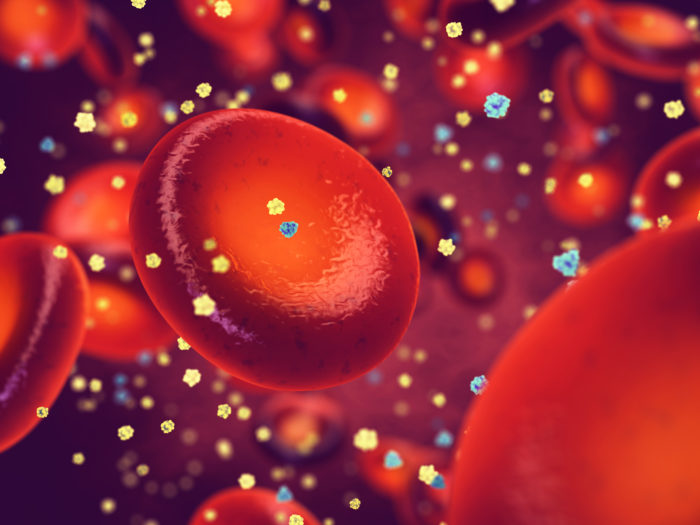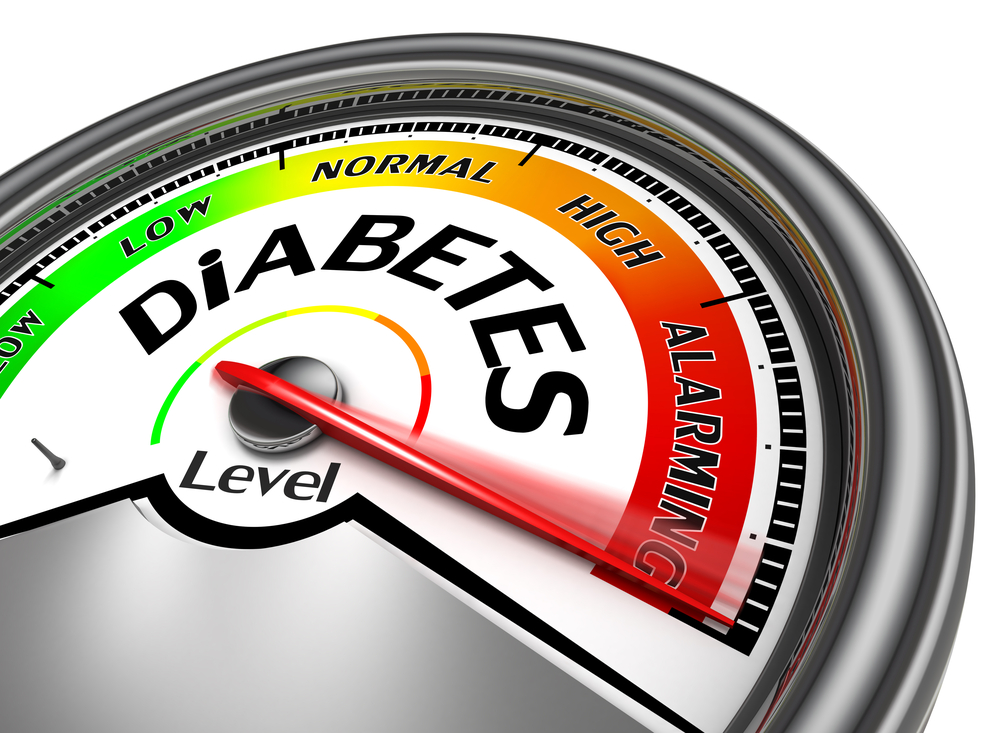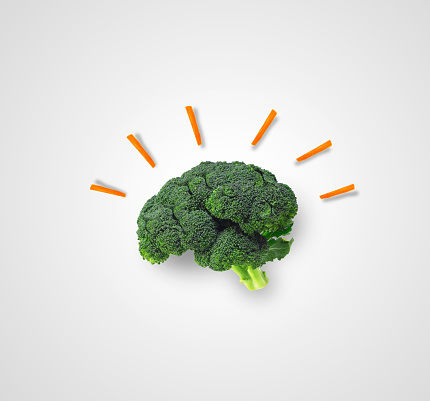
Controlling blood glucose reduces your risk of deadly diseases
February 25th, 2020By Leslie J. Farer
The incidence of high blood sugar has been escalating at an alarming rate: more than nine percent of Americans currently suffer from type-2 diabetes, (1) 34 percent are on the verge of developing the disease with a condition known as pre-diabetes, (1) and another sizable percentage has blood sugar levels that are lower than the pre-diabetes range, but still higher than optimal − that means the majority of Americans are unable to maintain their blood glucose within a healthy range.
The incidence of pre-diabetes and diabetes is similar in the UK (2) and other countries, indicating that this is a global health crisis. Also startling is that many are unaware of their hyperglycemic status: about a quarter of diabetics (1) and many pre-diabetics are undiagnosed, and even those with ideal fasting glucose levels may experience dangerous blood sugar fluctuations throughout the day.
The consequences of excess sugar in the bloodstream are dire: increased risk of heart attack, stroke, kidney disease, vision loss, and amputations, not to mention accelerated aging. Everyone should be concerned about elevatedblood sugar, even if your doctor tells you your fasting glucose is “normal.” Fortunately, there are steps you can take to lower the risk of glucose-related degenerative diseases through a combination of lifestyle changes and targeted supplements like BloodSugar-Pro™, an innovative formulation of ten traditional Ayurvedic medicinal herbs fortified with GCB70® (green coffee bean extract).
What is diabetes?
Diabetes is a condition characterized by high levels of glucose (a type of sugar) in the bloodstream. (Note: The terms “glucose” and “sugar” are used interchangeably in this article.) The most common form is type-2 diabetes, which accounts for about 90 percent of cases (with the remainder due to type-1 diabetes, an autoimmune disease). (3) Type-2 diabetes predominantly results from the failure of tissues to either synthesize or respond effectively to insulin, a hormone produced in the pancreas that enables glucose to enter cells, where it is used as fuel to create energy. Ideally, a relatively low level of insulin can efficiently process glucose, but in diabetics, the activity or sensitivity of insulin is impaired (in a process called “insulin resistance”) due to faulty cell signaling, which results in a buildup of glucose in the bloodstream, prompting the pancreas to pump out higher and higher levels of the hormone to shuttle sugar into cells. The pancreas can’t maintain this increased workload indefinitely, eventually causing blood sugar to rise into the pre-diabetic range (pre-diabetes is an interim step before full-blown diabetes) and ultimately the diabetic range. The major contributors to the dramatic increase in diabetes cases over the past couple of decades are higher rates of obesity due to larger portion sizes, sugary beverages, and lack of exercise. Age is also a factor.
Conventional medicine misses many cases of high blood sugar, putting patients at risk
Diabetes and pre-diabetes are typically diagnosed with blood tests that measure fasting glucose (after an overnight fast of eight hours or more) or hemoglobin A1c (glycated hemoglobin, which reflects an average blood sugar value over the past two to three months), usually according to these reference ranges:
| Fasting Blood Glucose | Hemoglobin A1c | |
| Normal | below 100 mg/dL (milligrams per deciliter) | below 5.7% |
| Prediabetes | 100-125 mg/dL | 5.7% – 6.4% |
| Diabetes | 126 mg/dL and higher | 6.5% and higher |
However, there are two factors commonly overlooked by mainstream doctors. The first is that the cut-off for normal fasting blood glucose (100 mg/dL) is set too high, and that disease risk increases with levels above 75-85 mg/dL, not 100 mg/dL. For example, in a study evaluating the effect of blood glucose on disease risk in 2,000 nondiabetic men (40-59 years old) over 22 years, researchers found that those with levels greater than 85 mg/dL had a significantly higher mortality rate from cardiovascular diseases compared with men with lower levels. The study concluded that “Fasting blood glucose values in the upper normal range [i.e., 86-100 mg/dL] appears to be an important independent predictor of cardiovascular death in nondiabetic apparently healthy middle-aged men.” (4) Similarly, a meta-analysis (a statistical analysis of results of several related studies) of 20 studies on the association between blood glucose and cardiovascular disease in almost 100,000 nondiabetics (mostly men) over a 12-year period found that cardiovascular risk increases progressively as blood glucose exceeds 75 mg/dL. (5) The sobering conclusions of these studies point to the fact that normal fasting blood glucose should be re-defined as below 86 mg/dL (which would also lower the limits for pre-diabetes and diabetes). It should also be mentioned that fasting glucose in the high normal range is a risk factor for other degenerative conditions besides cardiovascular disease, including full-scale diabetes. Consider that each milligram per deciliter of fasting blood glucose increases diabetes risk by six percent even within the range currently defined as normal. (6) So even if your doctor tells you that your fasting glucose is “normal,” you may still be at risk of degenerative diseases if it exceeds 75-85 mg/dL.
The second overlooked danger, even in those with optimal fasting glucose below 86 mg/dL, stems from after-meal (“post-prandial”) peaksin blood sugar that can last several hours after eating. According to one study, even non-diabetics spend much of the day with glucose levels in the pre-diabetic range. (7) These post-prandial fluctuationsraise the risk of cardiovascular disease in patients with or without diabetes. (8,9) It’s important to recognize that both elevated fasting glucose and glucose spikes after meals contribute to the incidence of degenerative diseases. (10) Note that the HgA1c test, one of the diagnostic tests for diabetes, is an average indication of glycemic control over the past two to three months, and would reflect to some extent blood sugar fluctuations throughout the day, including post-prandial responses. But if your doctor only tests your fasting glucose, after-meal sugar surgeswill not be detected, increasing your disease risk. Again, curbing post-meal glucose spikes, even in non-diabetics, is as important as controlling fasting blood glucose.
What can we do about it?
We must all take high blood sugar seriously, whether diagnosed with diabetes or prediabetes, or even in cases of normal blood test results. Inadequate diagnostic limits for fasting glucose coupled with post-prandial glucose elevations that occur repeatedly throughout the day and reach hyperglycemic levels put many more at risk than currently recognized by conventional medicine. Each milligram per deciliterincrease in blood glucose raises the risk of cardiovascular disease, cancer, Alzheimer’s and dementia, kidney disease, neuropathy, retinal damage, foot and leg amputations, and shortened lifespan. Thankfully, there is something we can do about it − blood glucose can be successfully controlled with a program of lifestyle modifications and research-verified supplements (and drugs when necessary). BloodSugar-Pro™ is an innovative product formulated with 10 traditional Ayurvedic medicinal plants further enriched with GCB70 (green coffee bean extract). These ingredients act by complementary mechanisms to normalize several indicators of glycemic control such as fasting and post-prandial glucose levels, hemoglobin A1c, insulin secretion, and insulin sensitivity.
Anti-diabetic effects of traditional Ayurvedic herbs backed up by modern research
Ayurveda, the Indian system of medicine based on natural therapies and practices to restore balance in the body, is one of the world’s oldest systems to have documented the diagnosis and treatment of diabetes. Since ancient times, Ayurvedic practitioners have had at their disposal a natural pharmacy consisting of thousands of medicinal plants to treat various ailments and diseases, including diabetes. Studies performed over the past two to three decades have indeed shown that many of these time-tested plants contain pharmacologically active constituents that when used singly or in combination are effective in preventing and treating high blood sugar and its complications. In fact, the focus of research into potential diabetes treatments has shifted from synthetic drugs to bioactive compounds derived from natural sources. Herbal therapies provide an effective, safe, and cost-effective alternative to conventional drugs (without the need for a prescription).
BloodSugar-Pro™ contains these 10 Ayurvedic medicinal plants:
| Karela or Bitter Melon (Momordica charantia) |
| Jambubae (Eugenia jambolana) |
| Kariyatu or Indian gentian (Swertia chirata) |
| Methi or Fenugreek (Trigonella foenum-graecum) |
| Neempan (Melia azedarach) |
| Gudmaar (Gymnema sylvestre) |
| Amla fruit or Indian gooseberry (Emblica officinalis) |
| Galo (Tinospora cordifolia) |
| Haldi or Turmeric (Curcuma longa) |
| Kutaki (Picrorhiza kurroa) |
Each plant is listed on Pub Med (the “Medline” database of references and abstracts on medical research) and has undergone scientific studies that demonstrate its anti-diabetic activity. (3;11-33) When used in combination, as in BloodSugar-Pro™, these multiple therapeutic agents exert a synergistic glucose-lowering effect. And because of the increased overall potency of the mixture, each herb can be used at a lower dose, reducing any possibility of minor side effects. We don’t have the space to examine all 10 herbs, so let’s explore the highlights of studies on a few of the most well-known:
- Curcumin, a principal component of turmeric (derived from underground stems of curcuma longa), is a popular spice and dietary supplement that exhibits antioxidant, anti-inflammatory, anti-cancer, and anti-diabetic activities. (11) A recent meta-analysis of seven trials found that curcumin significantly decreased fasting blood glucose in patients with metabolic syndrome (a cluster of metabolic risk factors such as high blood pressure, high blood sugar, and high cholesterol) while also improving triglycerides, HDL cholesterol, and diastolic blood pressure. (12) Curcumin has also been found to block the progression of pre-diabetes to full-scale diabetes, (11) as well as protect against diabetic complications, such as retinopathy and neuropathy. (11,13)
- Momordica charantia, also known as bitter melon, is a tropical vine that has been widely studied for its anti-diabetic effects. It contains a variety of bioactive compounds such as charantin and vicine that act by different mechanisms to increase insulin secretion, lower insulin resistance, and inhibit glucose absorption. (3,14) A meta-analysis of 10 studies on the effect of Momordica charantia in lowering markers of diabetes found that the medicinal plant significantly reduced fasting glucose, post-prandial glucose, and hemoglobin A1c. (15)
- Fenugreek (Trigonella foenum-graecum), also known as Methi in India, is an annual herb in the pea family with a diverse array of active components and a long history of use in treating a broad spectrum of conditions, including diabetes. A meta-analysis of 12 studies on diabetes and prediabetes showed that fenugreek significantly decreased levels of both fasting and postprandialblood glucose and hemoglobin A1c (as well as total cholesterol). (16)
- Gymnema sylvestre is a perennial woody vine that inhibits glucose absorption (17) and stimulates insulin secretion. (18) Appropriately, the Hindi term for the plant, gurmar or gudmaar, translates to “sugar destroyer.” In a study on the effects of Gymnema sylvestre in improving diabetic markers, patients receiving 500 mg of the herb daily for three months exhibited reduced fasting and postprandialblood glucose and lowered hemoglobin A1c (also with improvements in lipid profiles.) (19) In another study, patients taking one gram per day of Gymnema sylvestre for two months showed significantly higher circulating insulin and reduced fasting and post-prandialblood glucose. (18)
We’ve just examined four of these herbs but imagine the potentanti-diabetic effect from the mixture of ten of these traditional medicinal plants contained in BloodSugar-Pro™. And to make the product even more powerful, it’s formulated with yet another proven ingredient, a more recent addition to the glucose-lowering arsenal — GCB70® (green coffee bean extract).
GCB70® green coffee bean extract
Coffee beans technically are not beans, but rather green seeds contained in berries that grow on shrubs or small trees of the genus Coffea. They can be roasted and ground to make the mood-lifting drink many people consume each morning or left raw and processed to create an extract rich in beneficial phytochemicals such as the polyphenol chlorogenic acid. Chlorogenic acid functions as an antioxidant and anti-inflammatory as well as a regulator of glucose and lipid metabolism, (34) making it a potential treatment option in diabetes, cardiovascular disease, obesity, and cancer. BloodSugar-Pro™ contains low-dose GCB70®, a special form of decaffeinated green coffee bean extract containing 70 percent chlorogenic acid that is used in higher dosages as a popular weight loss supplement (i.e., GCB70®).
Specifically, regarding diabetes and blood glucose regulation, chlorogenic acid inhibits the liver enzyme glucose-6-phosphatase which catalyzes the last step in two processes that occur in the liver: glycogenolysis and gluconeogenesis. (35) Both of these glucose-manufacturing mechanisms developed in animals and humans to prevent blood sugar levels from falling dangerously low in the event of fasting or famine. In glycogenolysis, glycogen, the primary carbohydrate stored in the liver and muscles, is broken down into glucose and released into the bloodstream to maintain adequate blood sugar levels in the absence of food. If glycogen stores become totally depleted, another process, gluconeogenesis, takes over to synthesize glucose “from scratch.” The problem is, these internal safety mechanisms that ensure adequate blood glucose levels during fasting may become dysregulated or lose sensitivity with age, causing additional glucose to enter the bloodstream (from new synthesis or breakdown from glycogen stores), even in non-fasting individuals, further exacerbating chronically elevated blood sugar. That’s why identifying synthetic or natural substances like green coffee bean extract that can inhibit glucose-6-phosphatase to short-circuit the processes of glycogenolysis and gluconeogenesis has been the goal of much recent diabetes research.
In a clinical trial on the effects of green coffee bean extract on measures of glycemic control in metabolic syndrome, patients received 400 mg of the extract or placebo twice daily for eight weeks while consuming a balanced diet. By the end of the study, green coffee bean extract significantly improved both fasting glucose and insulin resistance (as well as systolic blood pressure, waist circumference, and appetite level). (36) Another study found similar results in mice, where green coffee bean extract also reduced insulin resistance (and fat accumulation associated with obesity). (37)
BloodSugar-Pro™ − part of a comprehensive program to control blood glucose
We’ll end where we began — that the incidence of diabetes and pre-diabetes is on the rise and even those who are told that their fasting glucose results are “normal” need to guard against the increased disease risk and accelerated aging associated with chronic and periodic blood sugar elevations. The mixture of 10 Ayurvedic medicinal herbs and GCB70® in BloodSugar- Pro™ acts synergistically to provide a powerful overall glucose-lowering, anti-diabetic effect. For the best results, BloodSugar-Pro™ should be used as part of a complete regimen that also involves diet and lifestyle modifications such as losing extra pounds and maintaining a suitable weight, exercising regularly for 30 minutes most days of the week, and eating a healthy diet free of refined carbohydrates and sugary drinks, and rich in whole fruits, vegetables, whole grains, lean protein, and low-fat or non-fat dairy.
Making these diet and lifestyle changes while supplementing with BloodSugar-Pro™ is a winning approach to controlling blood glucose and supporting your health and longevity.

References
(1) https://www.cdc.gov/diabetes/php/data-research/index.html
(2) https://www.diabetes.org.uk/
(3) Peter EL, Deyno S, Mtewa A, et al. Safety and efficacy of Momordica charantiaLinnaeus in pre-diabetes and type 2 diabetes mellitus patients: a systematic review and meta-analysis protocol. Syst Rev. 2018 Nov 15;7(1):192.
(4) Bjørnholt JV, Erikssen G, Aaser E, et al. Fasting blood glucose: an underestimated risk factor for cardiovascular death. Results from a 22-year follow-up of healthy nondiabetic men. Diabetes Care. 1999 Jan;22(1):45-9.
(5) Coutinho M, Gerstein HC, Wang Y, Yusuf S. The relationship between glucose and incident cardiovascular events. A metaregression analysis of published data from 20 studies of 95,783 individuals followed for 12.4 years. Diabetes Care. 1999 Feb;22(2):233-40.
(6) Nichols GA, Hillier TA, Brown JB. Normal fasting plasma glucose and risk of type 2 diabetes diagnosis. Am J Med. 2008 Jun;121(6):519-24.
(7) Færch K, Alssema M, Mela DJ, Borg R, Vistisen D. Relative contributions of preprandial and postprandial glucose exposures, glycemic variability, and non-glycemic factors to HbA1c in individuals with and without diabetes. Nutr Diabetes. 2018 Jun 1;8(1):38.
(8) Hashemi Madani N, Ismail-Beigi F, Khamseh ME, Malek M, Ebrahimi Valojerdi A. Predictive and explanatory factors of cardiovascular disease in people with adequately controlled type 2 diabetes. Eur J Prev Cardiol. 2017 Jul;24(11):1181-1189.
(9) Fu CP, Sheu WH, Lee WL, et al. Two-hour post-challenge hyperglycemia, but not fasting plasma glucose, associated with severity of coronary artery disease in patients with angina. PLoS One. 2018 Aug 15;13(8):e0202280.
(10) van Baak MA. 24-hour glucose profiles on diets varying in protein content and glycemic index. Nutrients. 2014 Aug 4;6(8):3050-61.
(11) Xu XY, Meng X, Li S, Gan RY, Li Y, Li HB. Bioactivity, Health Benefits, and Related Molecular Mechanisms of Curcumin: Current Progress, Challenges, and Perspectives. Nutrients. 2018 Oct 19;10(10).
(12) Azhdari M, Karandish M, Mansoori A. Metabolic benefits of curcuminsupplementation in patients with metabolic syndrome: A systematic review and meta-analysis of randomized controlled trials. Phytother Res. 2019 Apr 2.
(13) Parsamanesh N, Moossavi M, Bahrami A, Butler AE, Sahebkar A. Therapeutic potential of curcuminin diabetic complications. Pharmacol Res. 2018 Oct;136:181-193.
(14) Pahlavani N, Roudi F, Zakerian M, et al. Possible molecular mechanisms of glucose-lowering activities of Momordica charantia(karela) in diabetes. J Cell Biochem. 2019 Feb 20.
(15) Peter EL, Kasali FM, Deyno S, et al. Momordica charantiaL. lowers elevated glycaemia in type 2 diabetes mellitus patients: Systematic review and meta-analysis. J Ethnopharmacol. 2019 Mar 1;231:311-324.
(16) Gong J, Fang K, Dong H, Wang D, Hu M, Lu F. Effect of fenugreek on hyperglycaemia and hyperlipidemia in diabetes and prediabetes: A meta-analysis. J Ethnopharmacol. 2016 Dec 24;194:260-268.
(17) Pothuraju R, Sharma RK, Chagalamarri J, Jangra S, Kumar Kavadi P. A systematic review of Gymnema sylvestre in obesity and diabetes management. J Sci Food Agric. 2014 Mar 30;94(5):834-40.
(18) Al-Romaiyan A, Liu B, Asare-Anane H, et al. A novel Gymnema sylvestre extract stimulates insulin secretion from human islets in vivo and in vitro. Phytother Res. 2010 Sep;24(9):1370-6.
(19) Kumar SN, Mani UV, Mani I. An open label study on the supplementation of Gymnema sylvestre in type 2 diabetics. J Diet Suppl. 2010 Sep;7(3):273-82.
(20) Rao SS, Najam R. Efficacy of combination herbal product (Curcuma longa and Eugenia jambolana) used for diabetes mellitus. Pak J Pharm Sci. 2016 Jan;29(1):201-4.
(21) Tanwar RS, Sharma SB, Prabhu KM. In vivo assessment of antidiabetic and antioxidative activity of natural phytochemical isolated from fruit-pulp of Eugenia jambolana in streptozotocin-induced diabetic rats. Redox Rep. 2017 Nov;22(6):301-307.
(22) Baliga MS, Fernandes S, Thilakchand KR, D’souza P, Rao S. Scientific validation of the antidiabetic effects of Syzygium jambolanum DC (black plum), a traditional medicinal plant of India. J Altern Complement Med. 2013 Mar;19(3):191-7.
(23) Sharma SB, Nasir A, Prabhu KM, Murthy PS. Antihyperglycemic effect of the fruit-pulp of Eugenia jambolana in experimental diabetes mellitus. J Ethnopharmacol. 2006 Apr 6;104(3):367-73.
(24) Jauhari N, Bharadvaja N, Sharma N. Swertia chirata: A Comprehensive Review with Recent Advances. Curr Pharm Biotechnol. 2017;18(9):730-739.
(25) Bajpai MB, Asthana RK, Sharma NK, Chatterjee SK, Mukherjee SK. Hypoglycemic effect of swerchirin from the hexane fraction of Swertia chirayita. Planta Med. 1991 Apr;57(2):102-4.
(26) Seifu D, Gustafsson LE, Chawla R, et al. Antidiabetic and gastric emptying inhibitory effect of herbal Melia azedarach leaf extract in rodent models of diabetes type 2 mellitus. J Exp Pharmacol. 2017 Mar 20;9:23-29.
(27) Khan MF, Rawat AK, Khatoon S, Hussain MK, Mishra A, Negi DS. In vitro and in vivo antidiabetic effect of extracts of Melia azedarach, Zanthoxylum alatum, and Tanacetum nubigenum. Integr Med Res. 2018 Jun;7(2):176-183.
(28) Variya BC, Bakrania AK, Patel SS. Antidiabetic potential of gallic acid from Emblica officinalis: Improved glucose transporters and insulin sensitivity through PPAR-γ and Akt signaling. Phytomedicine. 2019 Apr 1:152906.
(29) Fatima N, Hafizur RM, Hameed A, Ahmed S, Nisar M, Kabir N. Ellagic acid in Emblica officinalis exerts anti-diabetic activity through the action on β-cells of pancreas. Eur J Nutr. 2017 Mar;56(2):591-601.
(30) Chi S, She G, Han D, Wang W, Liu Z, Liu B. Genus Tinospora: Ethnopharmacology, Phytochemistry, and Pharmacology. Evid Based Complement Alternat Med. 2016;2016:9232593.
(31) Rajalakshmi M, Anita R. β-cell regenerative efficacy of a polysaccharide isolated from methanolic extract of Tinospora cordifolia stem on streptozotocin -induced diabetic Wistar rats.
Chem Biol Interact. 2016 Jan 5;243:45-53.
(32) Kumar S, Patial V, Soni S, et al. Picrorhiza kurroa Enhances β-Cell Mass Proliferation and Insulin Secretion in Streptozotocin Evoked β-Cell Damage in Rats. Front Pharmacol. 2017 Aug 22;8:537.
(33) Husain GM, Singh PN, Kumar V. Antidiabetic activity of standardized extract of Picrorhiza kurroa in rat model of NIDDM. Drug Discov Ther. 2009 Jun;3(3):88-92.
(34) Tajik N, Tajik M, Mack I, Enck P. The potential effects of chlorogenic acid, the main phenolic components in coffee, on health: a comprehensive review of the literature. Eur J Nutr. 2017 Oct;56(7):2215-2244.
(35) Henry-Vitrac C, Ibarra A, Roller M, Mérillon JM, Vitrac X. Contribution of chlorogenic acids to the inhibition of human hepatic glucose-6-phosphatase activity in vitro by Svetol, a standardized decaffeinated green coffee extract. J Agric Food Chem. 2010 Apr 14;58(7):4141-4.
(36) Roshan H, Nikpayam O, Sedaghat M, Sohrab G. Effects of green coffee extract supplementation on anthropometric indices, glycaemic control, blood pressure, lipid profile, insulin resistance and appetitein patients with the metabolic syndrome: a randomised clinical trial. Br J Nutr. 2018 Feb;119(3):250-258.
(37) Song SJ, Choi S, Park T. Decaffeinated green coffee bean extract attenuates diet-induced obesity and insulin resistance in mice. Evid Based Complement Alternat Med. 014;2014:718379.







